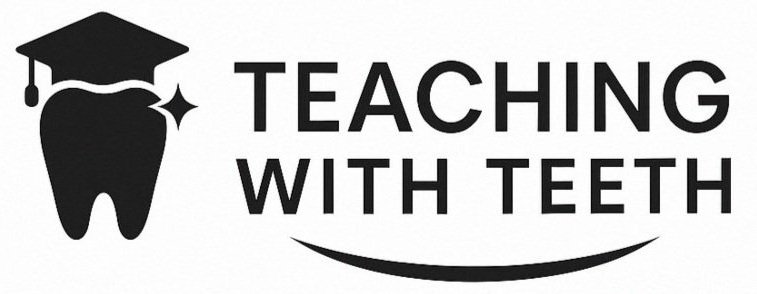Lights, Camera, Charting!
Using Learning Glass to engage Dental Students
In the ever evolving world of dental education, finding innovative ways to engage learners is crucial, especially when teaching complex, often repetitive topics like dental charting. One technology making a powerful impact is the Learning Glass, a lightboard setup that allows educators to face the camera while writing and drawing illuminated content on glass. At the University of Portsmouth, I’ve found Learning Glass to be a game changer for making dense content more digestible and, dare I say, entertaining.
Why Use Learning Glass for Charting?
Dental charting is foundational knowledge, but traditionally it can be dry and difficult for students to absorb. With Learning Glass, I can demonstrate charting techniques live while maintaining eye contact with students on video. This subtle shift, being able to "look" at the learner while explaining, helps build rapport, improves focus, and replicates an interactive classroom feel, even in asynchronous learning.
It also supports constructive alignment, linking content delivery with assessments and practical application. For example, I teach Charting as part of the "Science Informing Practice" module, the short charting videos I created using Learning Glass are paired with clinical experience summative assessments. These microlearning clips reinforce concepts without overwhelming students, adhering to cognitive load theory.
Demonstrating the surfaces, making them visually impactful
Microlearning = Major Impact
Short form videos (under 10 minutes) are emerging as a best-practice strategy for content delivery. Why? They reduce cognitive load, cater to attention spans, and allow learners to revisit content when needed. In fact, NICE guideline NG30 recommends delivering oral health promotion messages in “a variety of formats and using different media to meet the needs of different groups” and these short videos are reflective of that.
Students report higher engagement with these bite-sized resources, and the format supports just-in-time learning, enabling learners to revisit specific elements right before a practical task or assessment. One student commented after watching a charting clip:
“This was the first time I didn’t leave a science lesson feeling confused or overwhelmed”
Highlighting key terminology
Pedagogy Meets Technology
As the Technology Enhanced Learning Lead for the Dental Academy, my aim is always to ensure technology choices are grounded in pedagogy, not novelty. The Learning Glass supports multimodal learning: visual (seeing the charts drawn), auditory (hearing the explanation), and kinesthetic (when combined with hands-on practice). The scalability and sustainability of this approach are also worth noting. Once a video is created, it can be used across cohorts via Moodle. It supports reflective teaching practice (a key component of the HEA fellowship journey I’m undertaking) and fosters consistency in teaching. By combining high-tech visuals with strong pedagogical underpinnings, tools like Learning Glass help demystify clinical concepts and keep learners engaged, even when covering the trickiest aspects of dental documentation.
Incorporating Learning Glass into teaching dental charting isn't just about adding flair; it's about aligning educational theory with practical need. It’s part of a broader commitment to teaching excellence, simulation fidelity, and student centred learning. If you’re looking to refresh your approach to teaching core skills, I’d encourage you to try stepping behind the glass, you might just find your students watching more than ever before.
A behind the scenes look at filming




